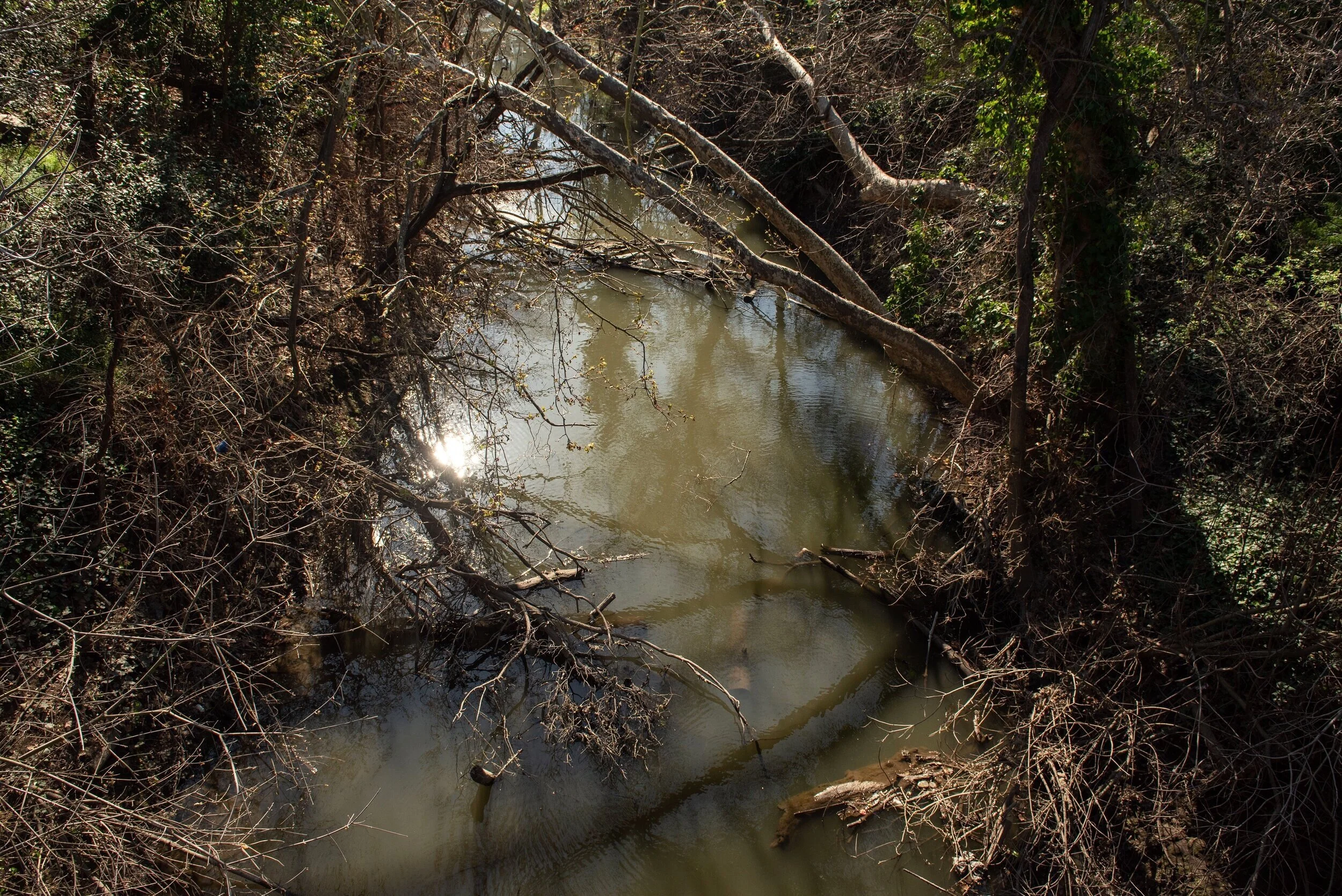
Three years after the 2017 Coyote Creek Flood, victims of one of the worst natural disaster in San José’s recent history are still waiting for compensation.

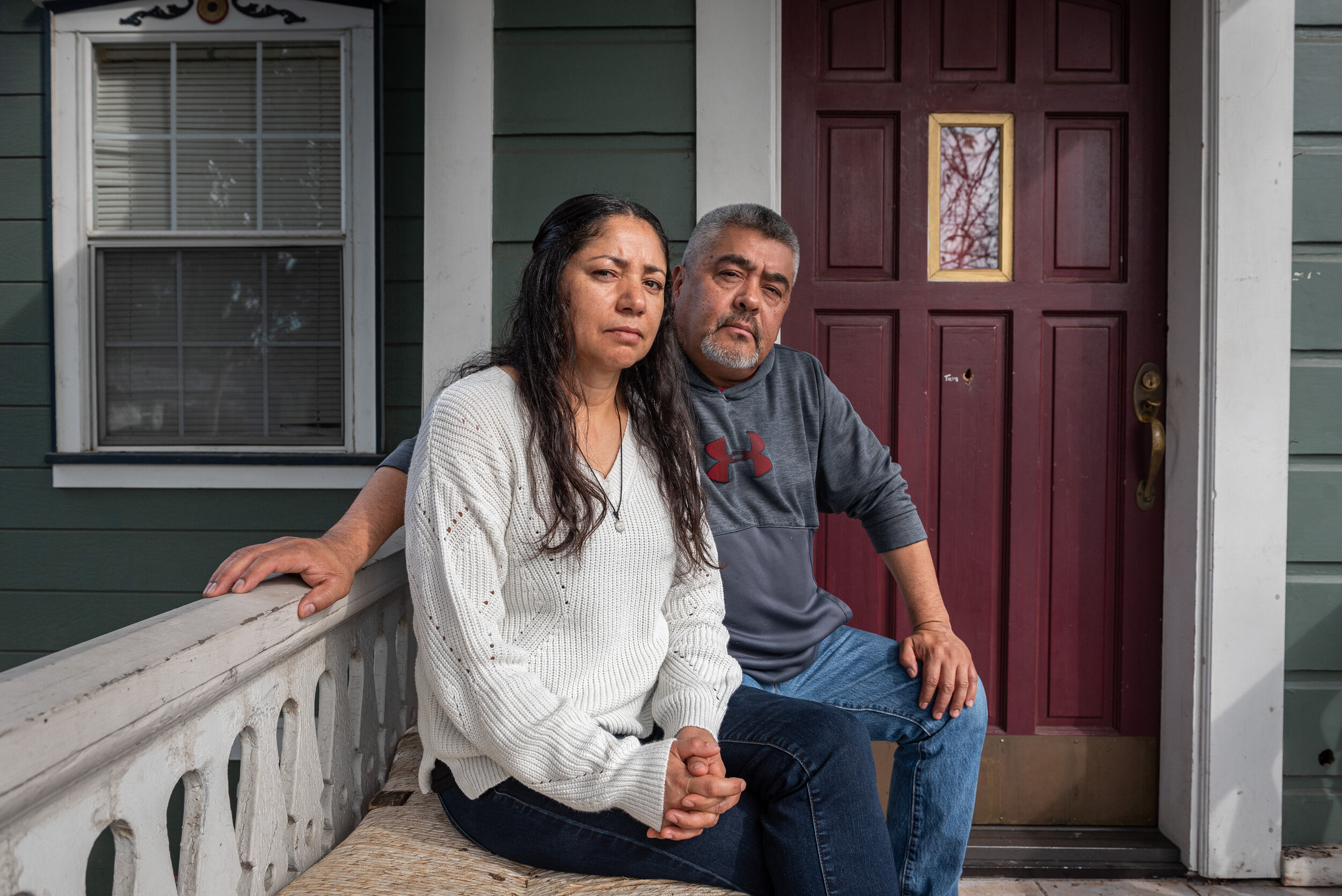
Maria Elena Hernandez and Roberto Araujo run a small cleaning business and live in the Olinder neighborhood with their 4 children. With no alerts, no warnings and no chance to save critical possessions, the Araujo family lost business equipment and tools, clothing, family memorabilia, and their 3 cars. They had to spend several thousand dollars to replace clothes, food, and find temporary housing.
“We have gone from living relatively comfortably to struggling to make ends meet”.
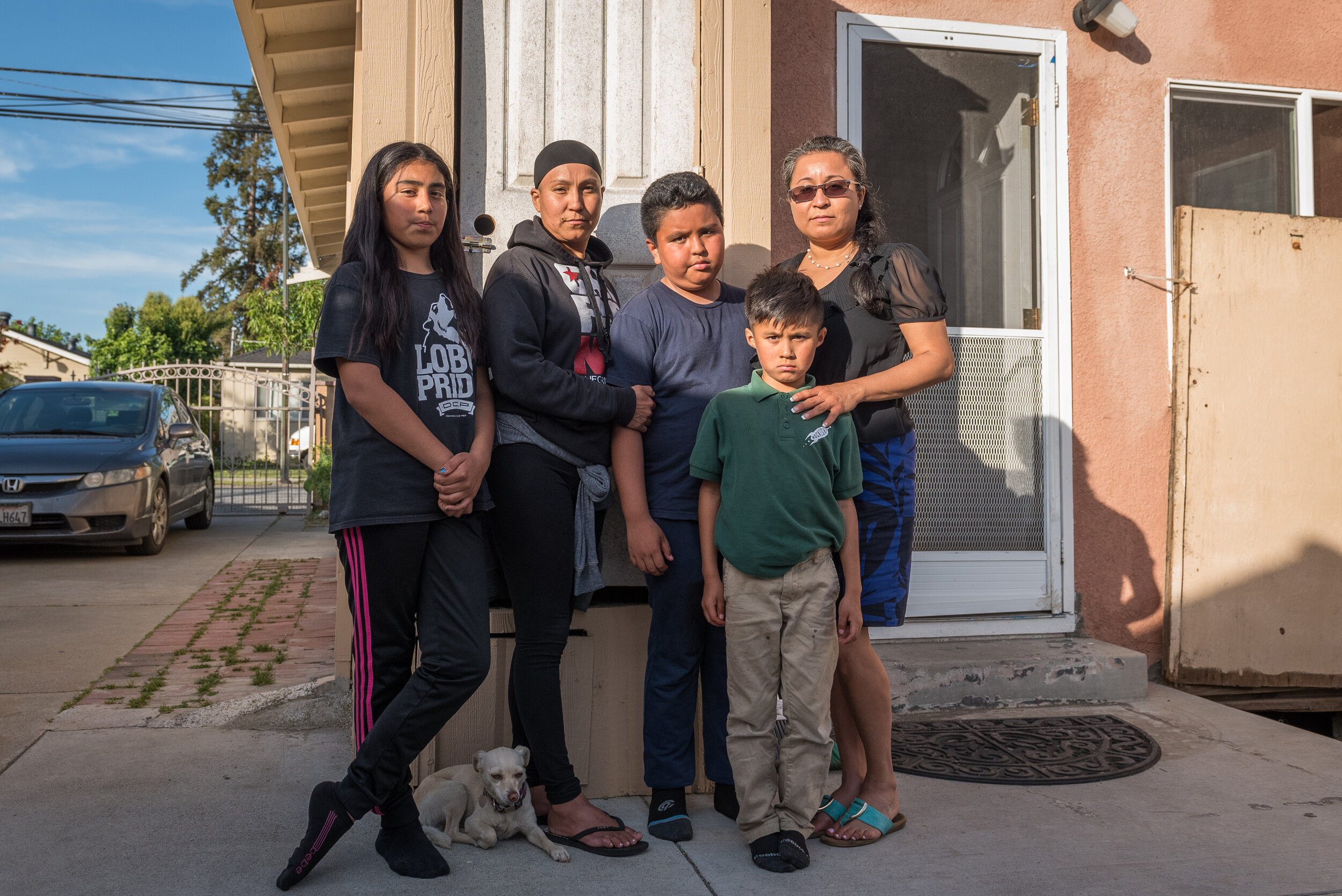
Teresa Pedizco, 43, right, with members of her family: Juan, 8, Alberto,10, Carolina, 38 and Alexa, 12.
“We are required to have flood insurance and yet our insurance didn’t cover us. The FEMA inspector declared our damaged to be less than $5,000. The inspection happened right after the flood and the damage to the house foundation was not detected. I have appealed, but they still denied our claim. We have received a small loan from the city of San José but it’s not enough to cover the repairs caused by the flood. It’s very disheartening.”
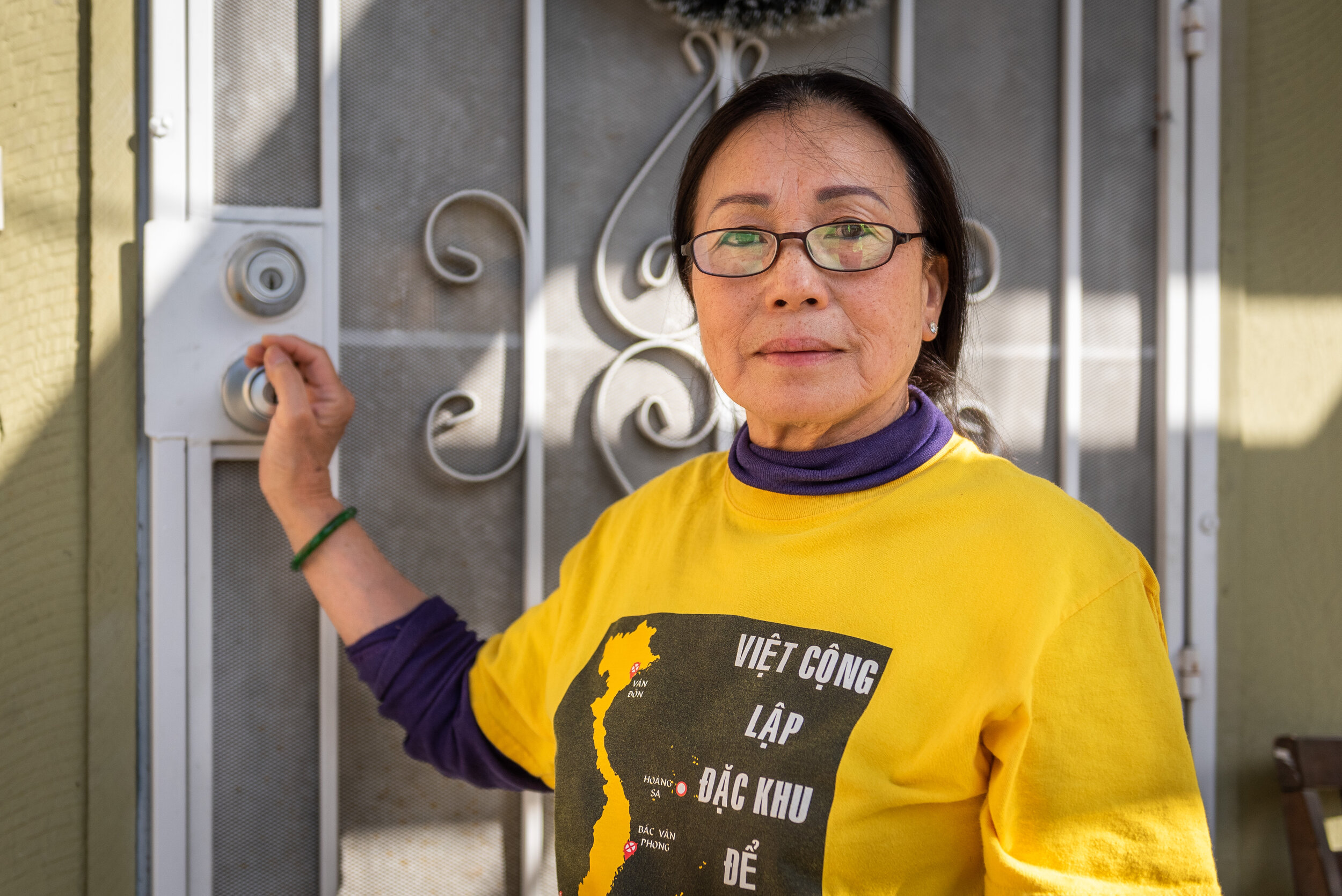
Hien Nguyen, 73, is a refugee from Vietnam who lives in the Rock Springs neighborhood. The 2017 flood destroyed most of her possessions. “Nobody told us the flood would come - it was terrible. All I want is to live in a safe place. I have worked hard for many years to support my family; being evacuated during the 2017 flood with no warning and no chance to protect or save anything was emotionally devastating, particularly since I had also been evacuated from Vietnam. Since the City has accepted responsibility for not giving us any warning, I don’t understand why they have still not settled our claims for our losses”.
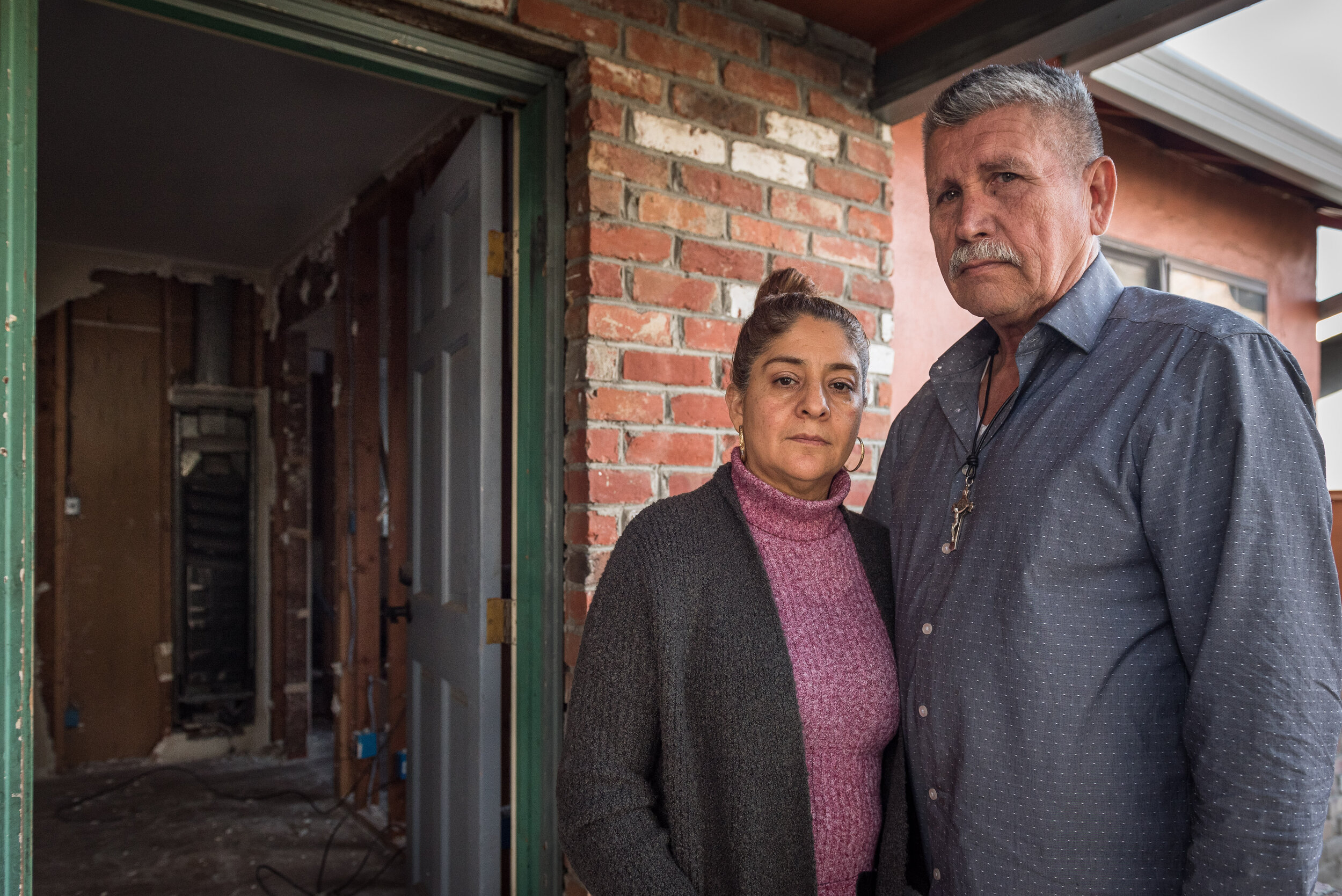
“This was our fist home. We were renting it out, and our son was also living on the property”, say Maria and Gabriel Bravo, of their home in Olinder Park neighborhood.
The flood damaged the foundation of their home and as consequence the house has been declared uninhabitable.
“We are still paying a mortgage on the house, but nobody can live in it. The rent used to cover the mortgage and provide a bit of income. Now it’s all gone. It costs $450,000 to repair the foundation. But we don’t have that kind of money” says Gabriel. “Our son now lives in Los Banos and commutes to his job in San José, he can no longer afford to live in the city”.
San Jose is currently in an affordable housing crisis.
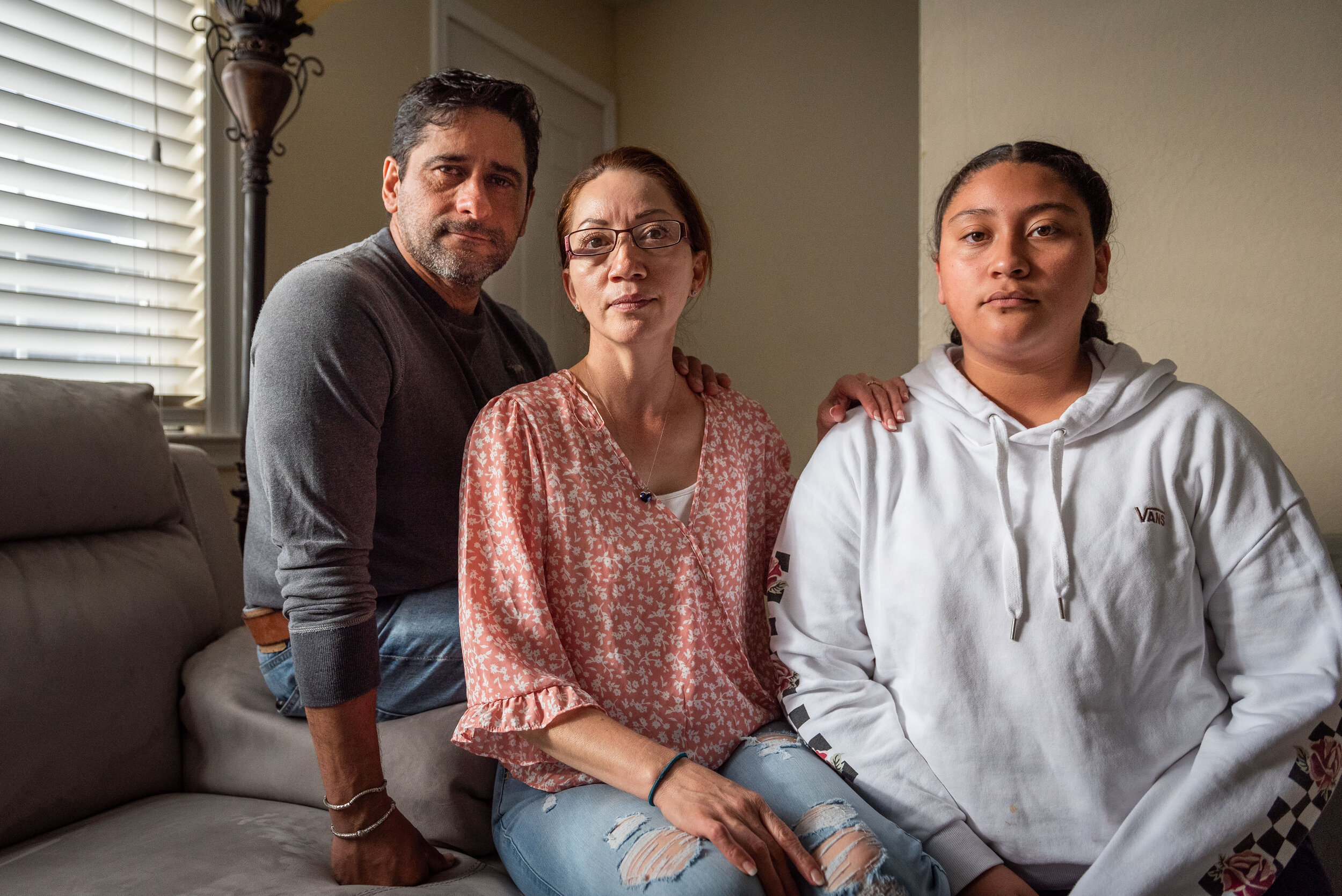
Armando and Sandra Lopez, with their younger daughter Esmeralda. “I had to evacuate the apartment in the middle of the flood with my grandpa. The water was going up really fast, it was very scary. We couldn't come back to our apartment for 4 months.” says Esmeralda.
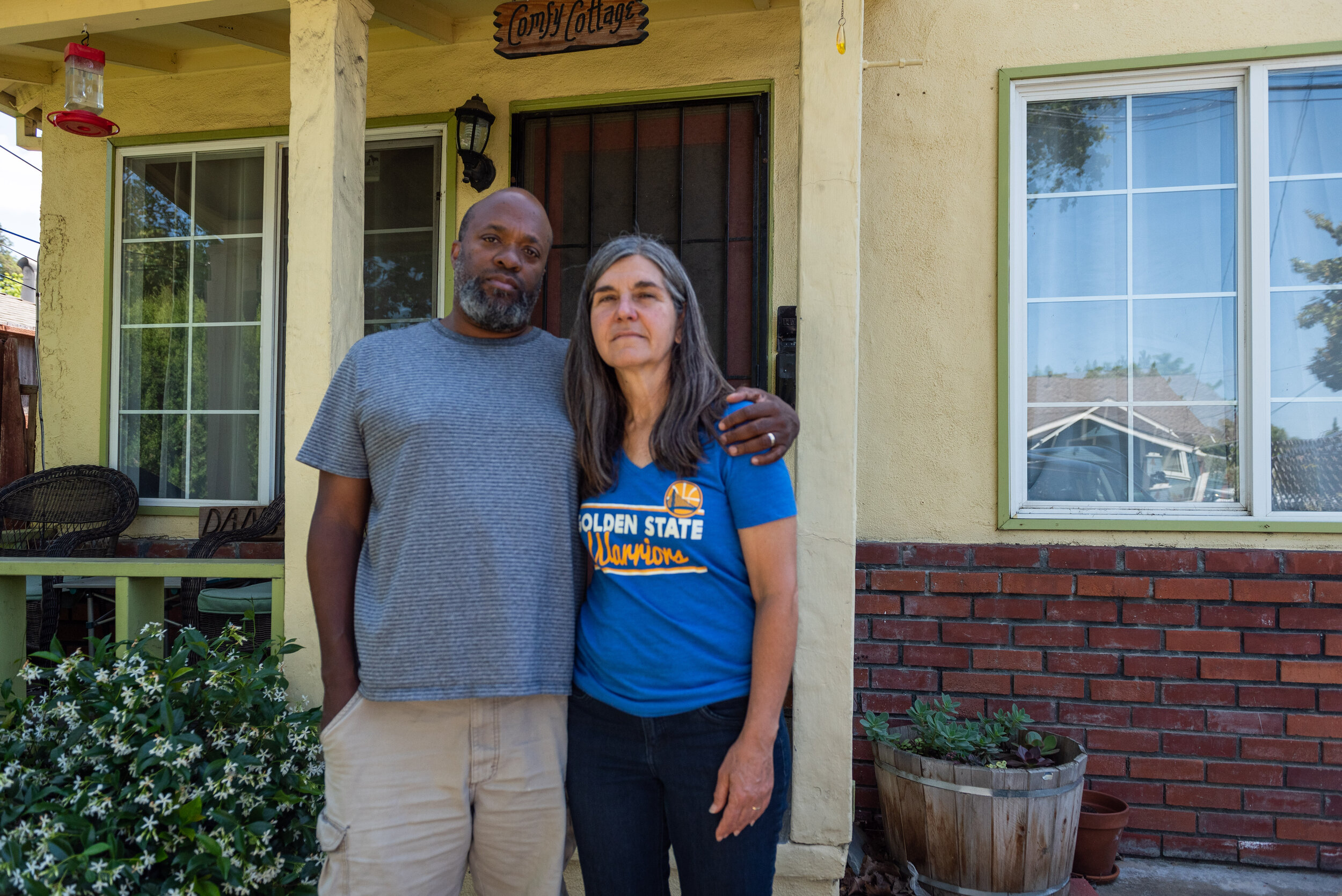
Mark and Robi McClure live not far from Maria and Gabriel Bravo. ”By 6pm, the day of the flood, the water was at our front door, there were cars floating on the street. Luckily, we had sand bags that prevented the water from coming into the house. But we had water in the crawl space below the house, touching the floorboards, for over a week after the flood. I lost a lot of pictures and letters from my father; he passed away when I was 14 years old, and I was the keeper of the mementoes of our family; those were irreplaceable items that are lost forever. We have bounced back, but it was dramatic and difficult. Flood insurance didn’t cover all of the repairs, the rest was paid for with money intended to go into our retirement fund” says Mark McClure.
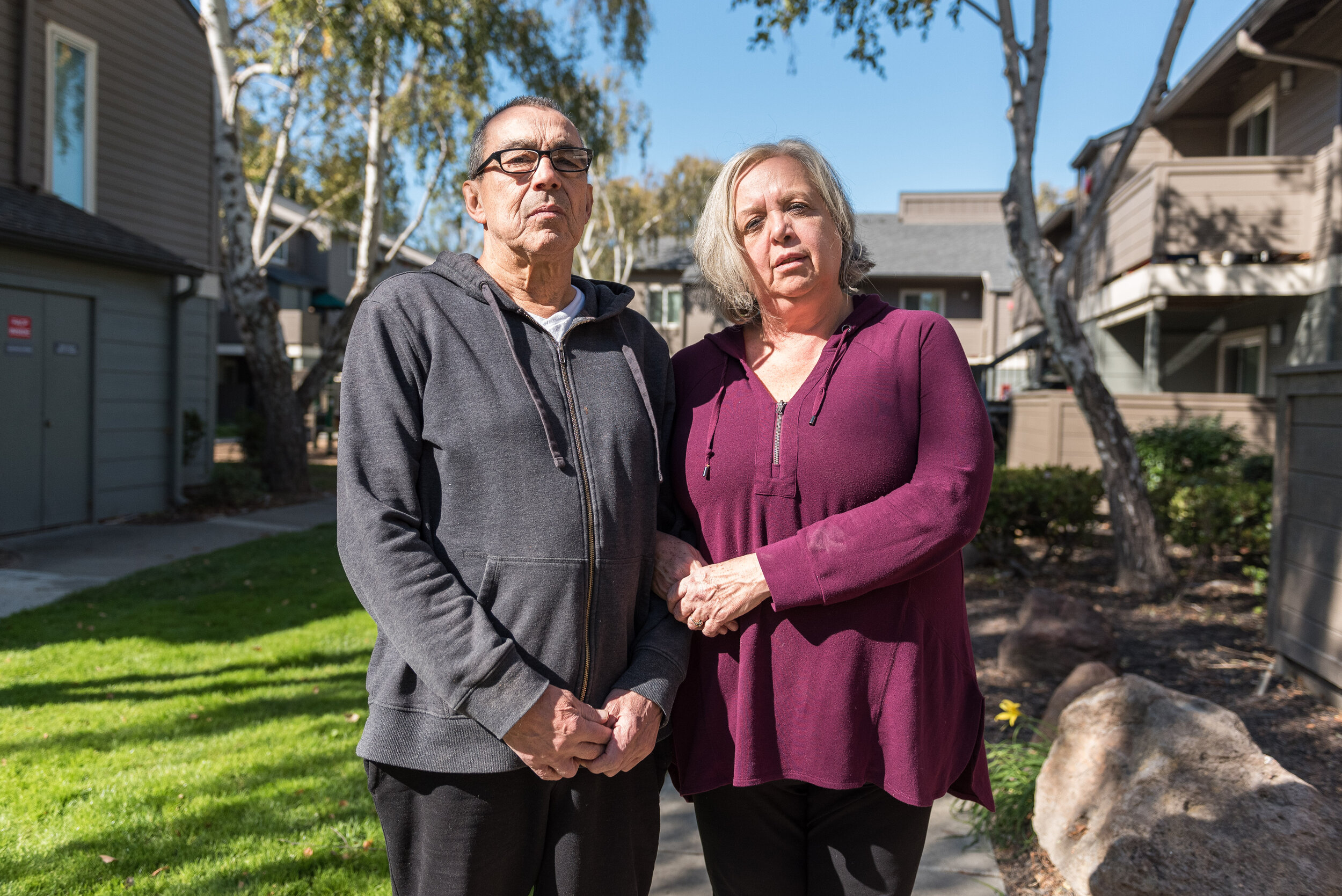
John Flores and Manon Demers in the courtyard of the apartment complex where they moved after the flood. “Nobody ever came to tell us to evacuate. On top of loosing most of our possessions, the hardest thing has been not knowing if we were ever safe, after being exposed to flood water” says Manon Demers.

The Huynh Family: from left Van Doan, 68, Kate, 7, Angelha, 38, and Peter, 4. Angelha and her family live in an apartment in Rock Springs. “We had over 3 feet of water in the house. We had a lot of damage: clothes, shoes, TV, laptop. Everything on the ground floor had to be thrown away; it took almost $10,000 just to fix up the car. After the flood the house was repaired but our rent went up from $1,750 to $2,500 per month. We cannot afford to live anywhere else” says Angelha.
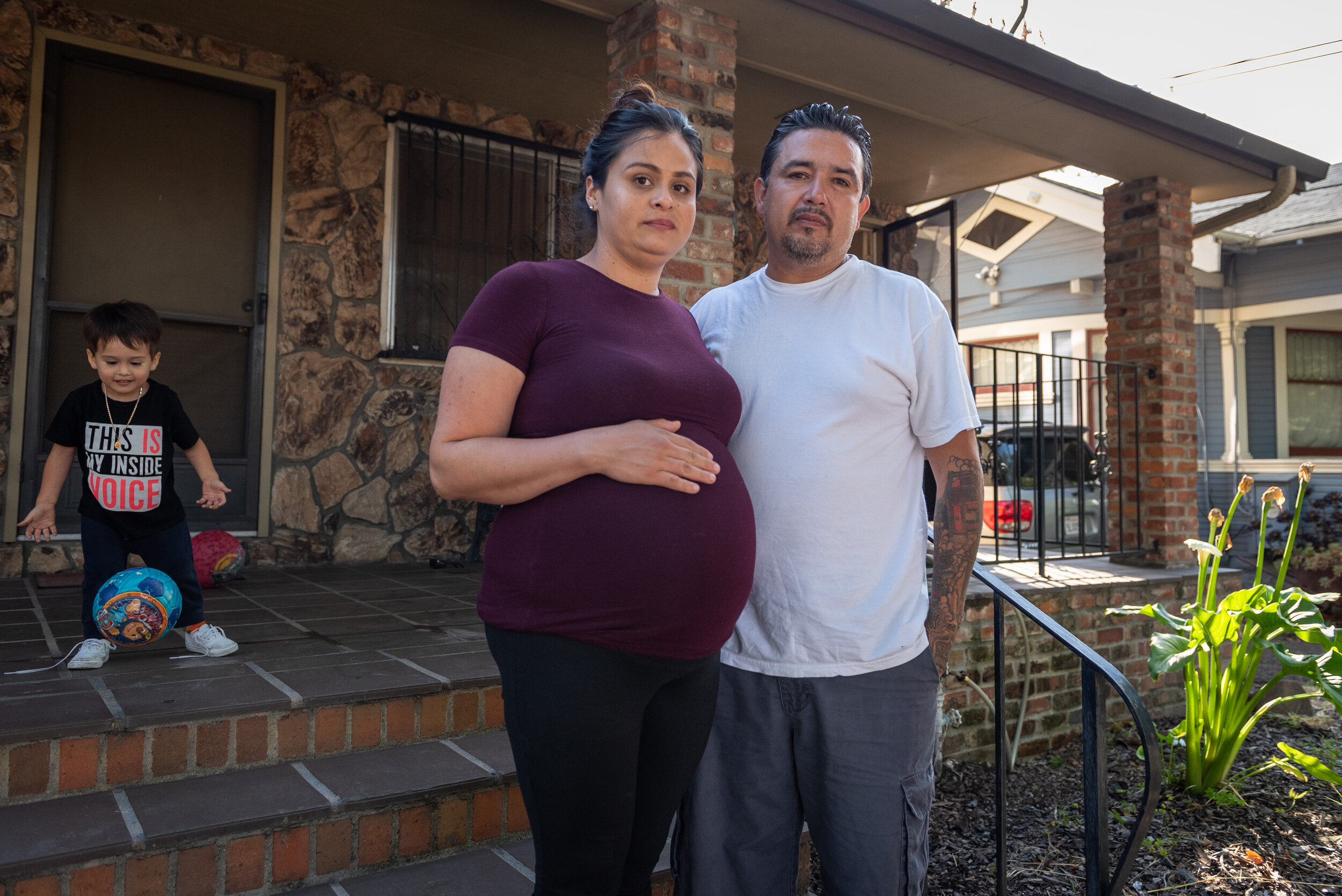
Dulce Mata and Saul Guzman with their son. “It was very hard. Our son was only 2 weeks old when the flood occurred. He got sick in the shelter where we stayed after the flood. We have moved to a new home now, but here we are paying twice as much in rent compared to the old home.
This is very difficult, we may have to move away from San José”.
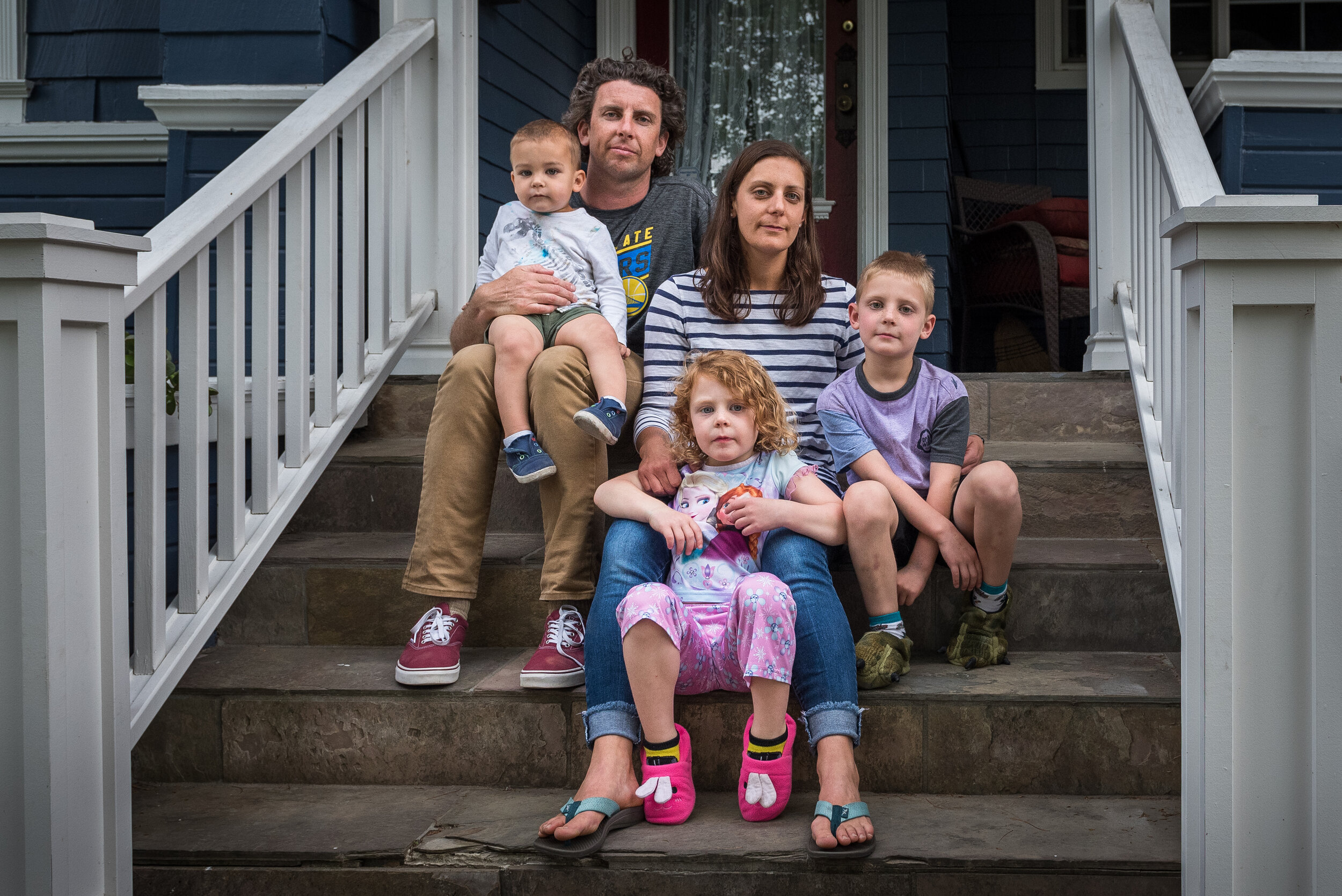
The Lavelle Family: from left Brendan, 2, Brendan, 38, Cat, 39, Evelyn, 4, and Nicholas, 5. They have been living in the Olinder neighborhood for 10 years. “The water came in really fast the day of the flood, forcing us to evacuate quickly. The following day we came back to find our basement filled with 4 feet of water. We have flood insurance but it doesn’t cover personal belongings. It only covered a portion of the cleanup and some repairs. We incurred over $70,000 worth of damages. It’s so frustrating because Valley Water could have done so much to prevent it; they knew that whenever Anderson Dam spills, it results in floods along Coyote Creek but nobody ever warned us. And the Water District has known for many years that the Dam was inadequate to prevent floods. After the flood, I went to City Hall to seek information and help, but it was complete chaos. The City was not at all prepared”.
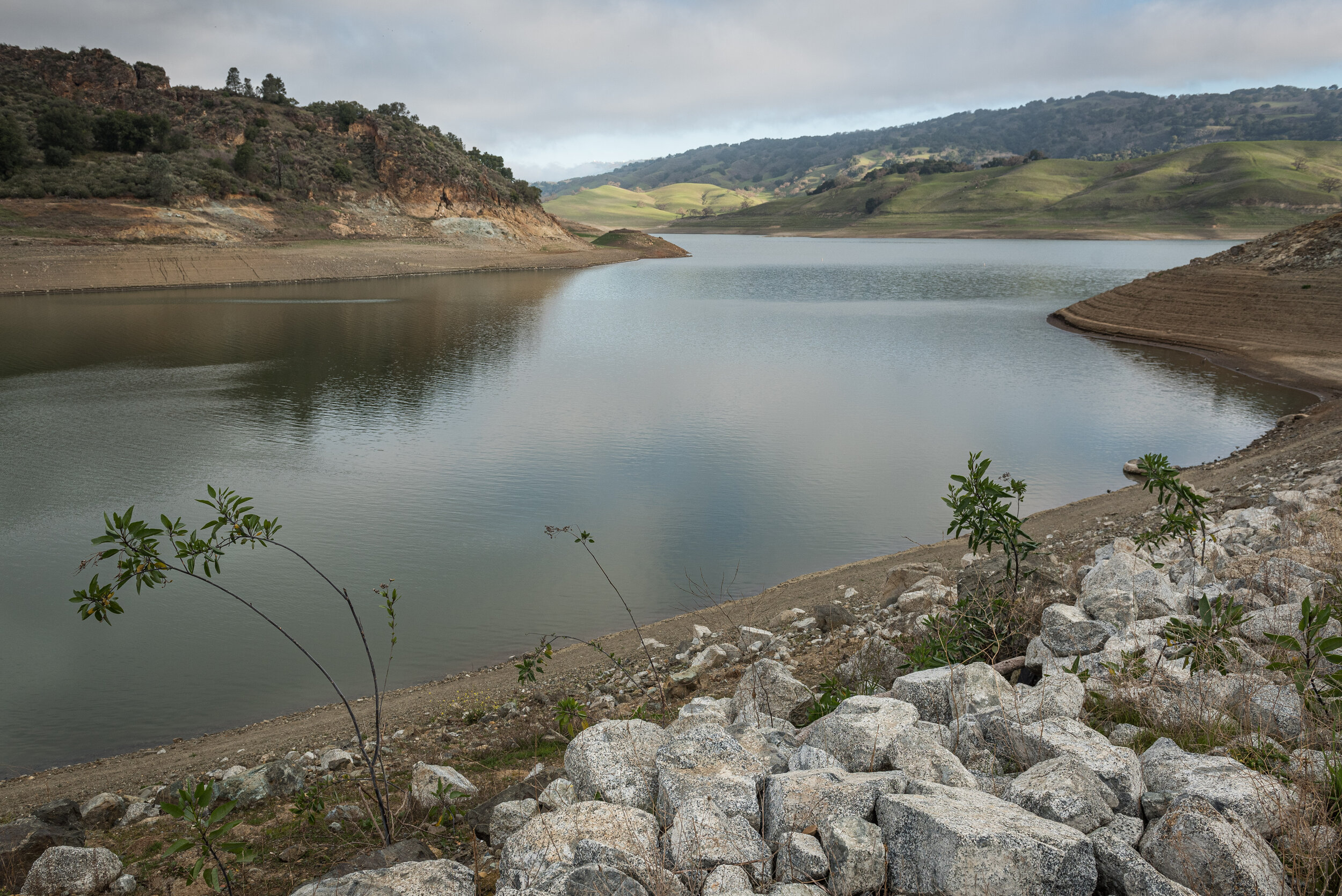
Since Anderson Dam and Reservoir was built in1950, the Reservoir has overtopped 13 times, each time causing floods along Coyote Creek.
After the 1997 flood, the City of San José acknowledged its shortcomings in preventing disaster and alerting those in harm’s way. In its assessment of the 1997 Flood, the City promised residents it would use the best available technology so what happened in 1997 “would never happen again”.
But the 2017 Flood shows how the Santa Clara Valley Water District and the City of San José are still unprepared to handle a flood event.
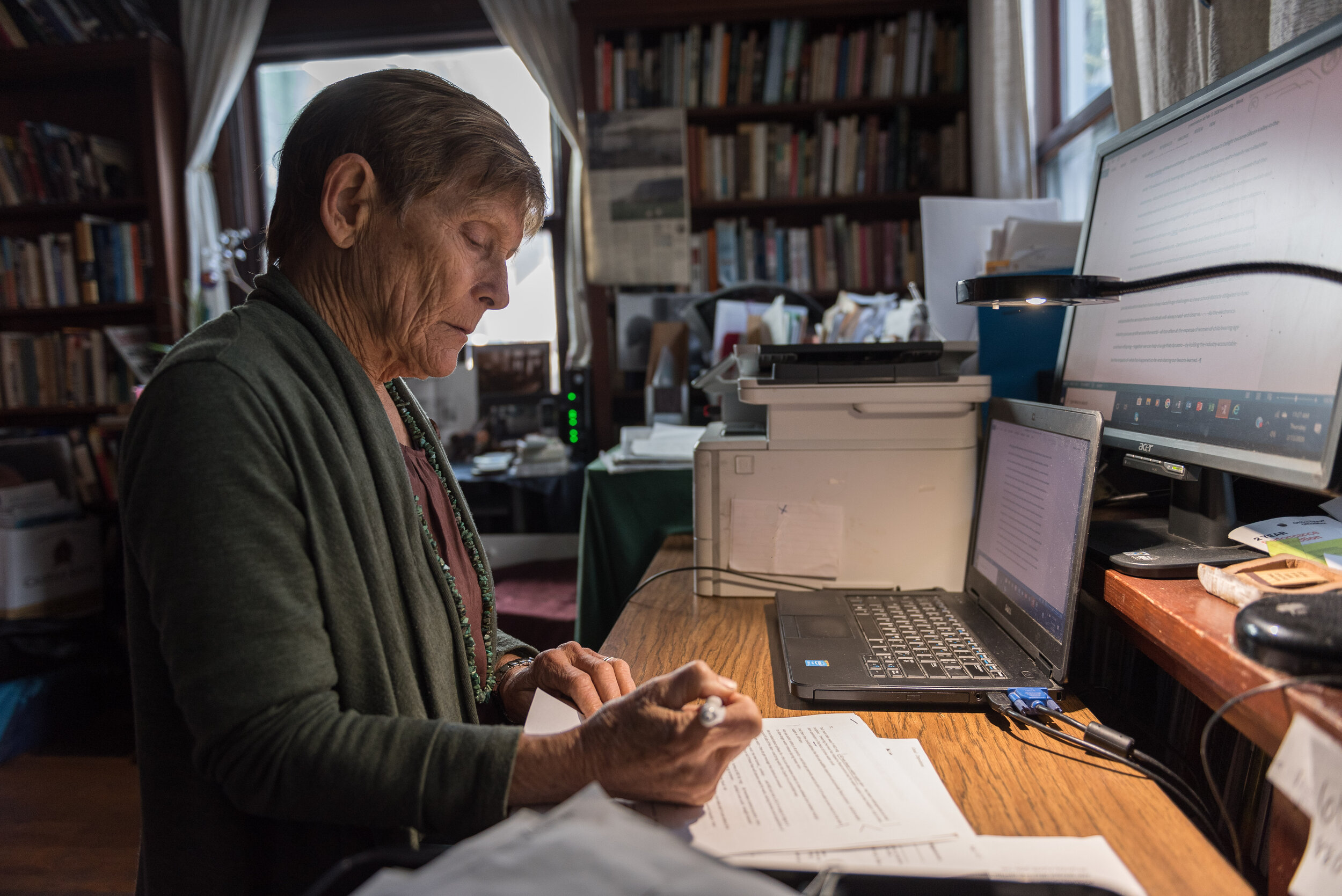
Amanda Hawes is the San Jose lawyer representing many of the victims still waiting for compensation.
‘This whole disaster was preventible. Time’s up for the City and the Water District to make the victims whole and to prove that they can and will prioritize protecting the health and safety of all communities downstream from Anderson Reservoir going forward “
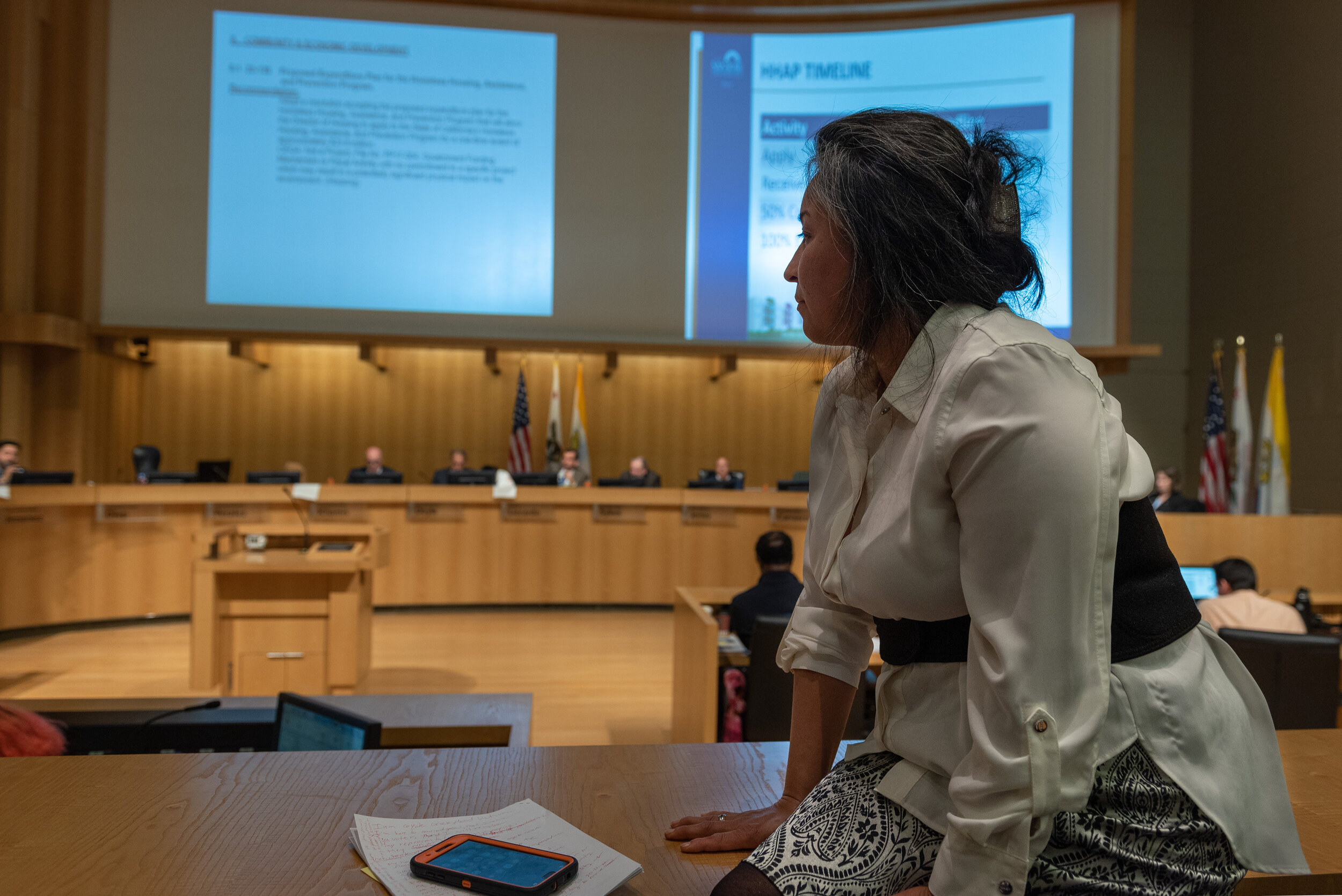
Teresa Pedrizco, together with other 2017 flood victims, waits to speak at the San José City Council Meeting, on February 11, 2020.
“After 3 years, we are still waiting for the City to take full responsibility for the 2017 Coyote Creek Flood. I am very disappointed and angry at our elected officials. Our lives were severely impacted by a disaster that was predicted and preventable. If we don’t hold officials accountable, this type of disaster is bound to happen again” says Teresa Pedrizco.















Three years after the 2017 Coyote Creek Flood, victims of one of the worst natural disaster in San José’s recent history are still waiting for compensation.
Maria Elena Hernandez and Roberto Araujo run a small cleaning business and live in the Olinder neighborhood with their 4 children. With no alerts, no warnings and no chance to save critical possessions, the Araujo family lost business equipment and tools, clothing, family memorabilia, and their 3 cars. They had to spend several thousand dollars to replace clothes, food, and find temporary housing.
“We have gone from living relatively comfortably to struggling to make ends meet”.
Teresa Pedizco, 43, right, with members of her family: Juan, 8, Alberto,10, Carolina, 38 and Alexa, 12.
“We are required to have flood insurance and yet our insurance didn’t cover us. The FEMA inspector declared our damaged to be less than $5,000. The inspection happened right after the flood and the damage to the house foundation was not detected. I have appealed, but they still denied our claim. We have received a small loan from the city of San José but it’s not enough to cover the repairs caused by the flood. It’s very disheartening.”
Hien Nguyen, 73, is a refugee from Vietnam who lives in the Rock Springs neighborhood. The 2017 flood destroyed most of her possessions. “Nobody told us the flood would come - it was terrible. All I want is to live in a safe place. I have worked hard for many years to support my family; being evacuated during the 2017 flood with no warning and no chance to protect or save anything was emotionally devastating, particularly since I had also been evacuated from Vietnam. Since the City has accepted responsibility for not giving us any warning, I don’t understand why they have still not settled our claims for our losses”.
“This was our fist home. We were renting it out, and our son was also living on the property”, say Maria and Gabriel Bravo, of their home in Olinder Park neighborhood.
The flood damaged the foundation of their home and as consequence the house has been declared uninhabitable.
“We are still paying a mortgage on the house, but nobody can live in it. The rent used to cover the mortgage and provide a bit of income. Now it’s all gone. It costs $450,000 to repair the foundation. But we don’t have that kind of money” says Gabriel. “Our son now lives in Los Banos and commutes to his job in San José, he can no longer afford to live in the city”.
San Jose is currently in an affordable housing crisis.
Armando and Sandra Lopez, with their younger daughter Esmeralda. “I had to evacuate the apartment in the middle of the flood with my grandpa. The water was going up really fast, it was very scary. We couldn't come back to our apartment for 4 months.” says Esmeralda.
Mark and Robi McClure live not far from Maria and Gabriel Bravo. ”By 6pm, the day of the flood, the water was at our front door, there were cars floating on the street. Luckily, we had sand bags that prevented the water from coming into the house. But we had water in the crawl space below the house, touching the floorboards, for over a week after the flood. I lost a lot of pictures and letters from my father; he passed away when I was 14 years old, and I was the keeper of the mementoes of our family; those were irreplaceable items that are lost forever. We have bounced back, but it was dramatic and difficult. Flood insurance didn’t cover all of the repairs, the rest was paid for with money intended to go into our retirement fund” says Mark McClure.
John Flores and Manon Demers in the courtyard of the apartment complex where they moved after the flood. “Nobody ever came to tell us to evacuate. On top of loosing most of our possessions, the hardest thing has been not knowing if we were ever safe, after being exposed to flood water” says Manon Demers.
The Huynh Family: from left Van Doan, 68, Kate, 7, Angelha, 38, and Peter, 4. Angelha and her family live in an apartment in Rock Springs. “We had over 3 feet of water in the house. We had a lot of damage: clothes, shoes, TV, laptop. Everything on the ground floor had to be thrown away; it took almost $10,000 just to fix up the car. After the flood the house was repaired but our rent went up from $1,750 to $2,500 per month. We cannot afford to live anywhere else” says Angelha.
Dulce Mata and Saul Guzman with their son. “It was very hard. Our son was only 2 weeks old when the flood occurred. He got sick in the shelter where we stayed after the flood. We have moved to a new home now, but here we are paying twice as much in rent compared to the old home.
This is very difficult, we may have to move away from San José”.
The Lavelle Family: from left Brendan, 2, Brendan, 38, Cat, 39, Evelyn, 4, and Nicholas, 5. They have been living in the Olinder neighborhood for 10 years. “The water came in really fast the day of the flood, forcing us to evacuate quickly. The following day we came back to find our basement filled with 4 feet of water. We have flood insurance but it doesn’t cover personal belongings. It only covered a portion of the cleanup and some repairs. We incurred over $70,000 worth of damages. It’s so frustrating because Valley Water could have done so much to prevent it; they knew that whenever Anderson Dam spills, it results in floods along Coyote Creek but nobody ever warned us. And the Water District has known for many years that the Dam was inadequate to prevent floods. After the flood, I went to City Hall to seek information and help, but it was complete chaos. The City was not at all prepared”.
Since Anderson Dam and Reservoir was built in1950, the Reservoir has overtopped 13 times, each time causing floods along Coyote Creek.
After the 1997 flood, the City of San José acknowledged its shortcomings in preventing disaster and alerting those in harm’s way. In its assessment of the 1997 Flood, the City promised residents it would use the best available technology so what happened in 1997 “would never happen again”.
But the 2017 Flood shows how the Santa Clara Valley Water District and the City of San José are still unprepared to handle a flood event.
Amanda Hawes is the San Jose lawyer representing many of the victims still waiting for compensation.
‘This whole disaster was preventible. Time’s up for the City and the Water District to make the victims whole and to prove that they can and will prioritize protecting the health and safety of all communities downstream from Anderson Reservoir going forward “
Teresa Pedrizco, together with other 2017 flood victims, waits to speak at the San José City Council Meeting, on February 11, 2020.
“After 3 years, we are still waiting for the City to take full responsibility for the 2017 Coyote Creek Flood. I am very disappointed and angry at our elected officials. Our lives were severely impacted by a disaster that was predicted and preventable. If we don’t hold officials accountable, this type of disaster is bound to happen again” says Teresa Pedrizco.
